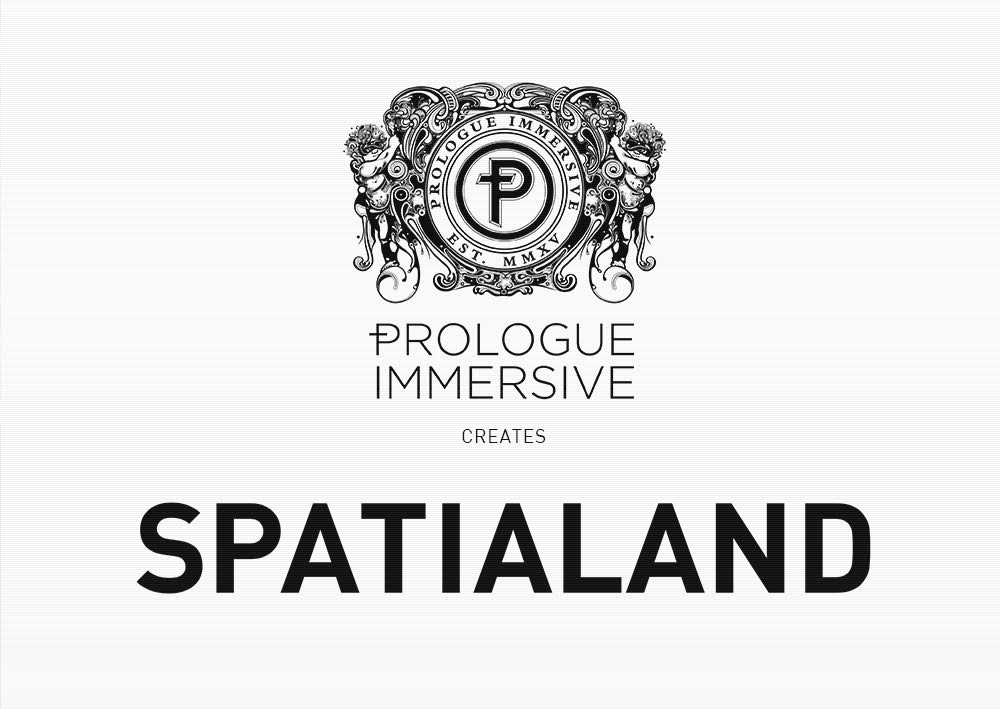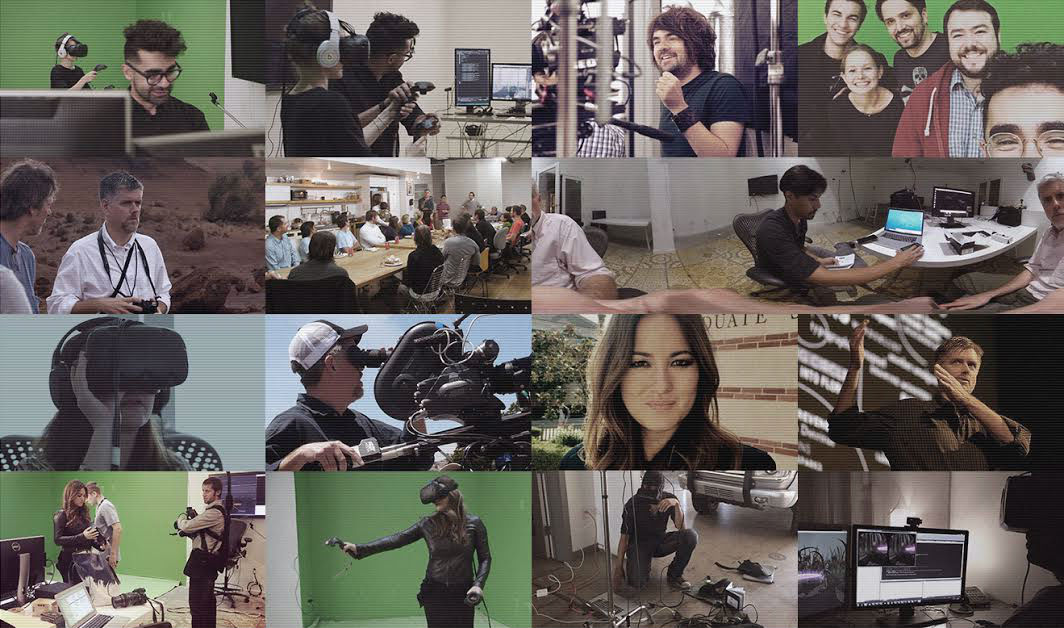In one of the most famous moments of speculative tech ever captured on screen, Minority Report’s Officer John Anderton (Tom Cruise) moves graphics, text, photos and video clips across a large pane of glass using only his two gloved hands to guide him. With a single film, this design — arguably the impetus of all gesture-based technology ever since — was cemented in the collective consciousness.
Released in 2002, the technology at the heart of this “wow” moment is on the cusp of being fully realized. This is of course due to the increased capability and availability of VR and AR headsets, but moreso, to the evolution of interface design.
Kurt Mattila, who designed the sequence, was recently hired by design company Prologue as an in-house director: “We always thought Tom Cruise’s character was an editor. He’s got all this raw footage of these murders and he’s assembling what happened. As a guy that loves to edit, I would love to have that [interface].”
This year, Prologue Immersive has done just that — they have actualized an elegant, fully functional VR interface.
Prologue Sits Where Sci-Fi Meets VR
I swung by the Prologue offices in Venice, California to learn more about their plans for branching into a whole new type of design — a VR platform known as Spatialand. The office is tucked away on the hippest of blocks, and marked by a stark modern door. As you walk inside the gallery-like interior (and are greeted by a very charming coordinator named Josephin) you’re immediately hit with design: big white walls with graphic posters, design books, and metallic chairs with faux fur throws. Unlike typical cavernous tech spaces, this one feels segmented in both a beautiful and useful way. The alignment between the aesthetic and the functional, in fact, is at the heart of the company’s mission.
I first sat down with Kyle Cooper (co-founder of Spatialand and president of Prologue) who Details magazine once credited with “almost single-handedly revitalizing the main title sequence as an art form.” Despite working mainly in digital effects, his office is filled with physical models of creatures that beg to be touched. (Harryhausen’s Cyclops, Godzilla, Dr. Octopus etc.)
Cooper discussed his lifetime love of design: “When I was in high school, the only class I would go to consistently was the art class, it was like a refuge –and I was sculpting creatures. My guidance counselor said to me, ‘you’re never going to get a job making monsters.’”
So Cooper pursued the “real job” of architecture before eventually going to Yale to study design under modernist master Paul Rand. The influence of Rand is easy to see in Cooper’s work. Surprising fonts, thick lines, and shapes that seem to teeter totter on impossible angles. But there is a darker tone as well — which is most readily seen in his title sequences for projects like Dawn of the Dead, American Horror Story or Se7en. He is also known for his comic book movie opening sequences — such as Spiderman where he created the now famous Marvel “flip-book” effect, and Prologue’s stunning tour-de-force main-on-end titles for Iron Man 3.
Cooper founded Imaginary Forces in 1996 and started Prologue Films with Kimberly Cooper (CEO of Spatialand and co-founder of Prologue) in 2003. Prologue has already made an impact on the VR/AR community. For example, their stop-motion-360 film Memos From Hell played at SXSW, and they created an animated learning experience called Science360.
Given the company’s risk-taking and mastery of the title sequence medium, Prologue has found a new problem to solve —how can one create a virtual interface where form and function co-exist?
Spatialand: A VR Design Platform
Kyle and Kimberly clearly drew from their own work habits when constructing Spatialand: “My interest in VR is very selfish,” said Kyle. “I just want to go into the VR space where nobody will bother me, and it is whatever I want it to be.”
Kimberly, a self-proclaimed tactile learner, also approached the design challenge from her preferred style: “I learn differently, I like to touch and look at things and be in it, rather than on flat pages or a flat screen,” She continued: “To me, the first time we tried to design in VR — actually go inside and lay things out —if i had to describe it to you, it would be like riding a bike for the first time.”
Enter Spatialand. A beautiful new design ecosystem; Spatialand is a revolutionary VR platform and toolset for enterprise, brands and consumers to create immersive content destinations. Prologue has visualized numerous futuristic technological systems (most notably the Jarvis system visual effects for Iron Man 1 and Iron Man 2), and this feels like an appropriate extension of that skillset. According to Prologue, this system “empowers creators to design and update their VR virtual content destinations.”
Louisa Spring (COO of Prologue Immersive) went into detail of how the Spatialand platform works: “You can import different files, look at them and move them around or trash them…You will be able to use the interface on a desktop or in a headset, but the tools that we have in the headset in VR are very intuitive. If you want to get a brush, you grab a brush. If you want to grab your files, you grab your files.”
Intuitive Interfaces Everywhere
You can alter your environments, link social media accounts, and engage with a large variety of tools and file types. Prologue is also experimenting with incorporating an AI like Iron Man’s Jarvis to further empower users.
This isn’t the first time an in-VR interface has been attempted. Tvori is a touch-based platform where you can manipulate objects and create short animated films. Unity’s Carte Blanche is imagined as a card-based system of organization, but this intuitive interface is still on the drawing board. And crowd favorite Tilt Brush is a blast, but only enables the user to create art — not construct an entire work flow.
While other ecosystems/sandboxes can do some things, Spatialand aims to be a kind of VR Swiss army knife. Prologue is in high-level talks at the moment, but are hopeful their creation will be available for consumer use not too far in the future.
Louisa summed up the appeal of Spatialand: “If you want people to be using your interface, you’ve got to make that interface something that you want to be in. You want to feel like you’re in Iron Man, you don’t want to feel like you’re in an office.”
But although the system is beautiful, it only succeeds if it inspires creators — and luckily, it seems to be carrying that torch.
Kurt Mattila gave some great insight into the way creators and interfaces can empower one another: “I’m not a designer, but I can appreciate from a film-making standpoint that they have a special way of seeing the world, where they will beautifully solve problems.”
He gave a wonderful example of such a fusion between design and cinema — citing the shower scene in Hitchcock’s Psycho, the design for which has historically been credited to Saul Bass.
In this tradition, it will be exciting to see how artists and businesses alike push forward the medium of VR using this toolkit.
So what’s next for Prologue Immersive? Apart from Spatialand, they are currently working on a VR game with legendary creator Hideo Kojima (The Metal Gear series.) Prologue couldn’t reveal much about the game itself, but promised it would be incredibly scary and have a “big twist.” And in general, they are looking forward to doing what they do best — having creatives bring them problems, and finding elegant solutions.
As Paul Rand said: “So that is the design process or the creative process. Start with a problem, forget the problem, the problem reveals itself or the solution reveals itself and then you reevaulate it.”
In essence, Prologue is taking the tactile nature of design and problem-solving and bringing it back into the visual world. As I left for the day, I asked Kim about Prologue’s approach to VR as a whole. Despite the company’s clear ability to foretell the future, she answered: “We’ve fallen in love with something we can’t quite see.”



























